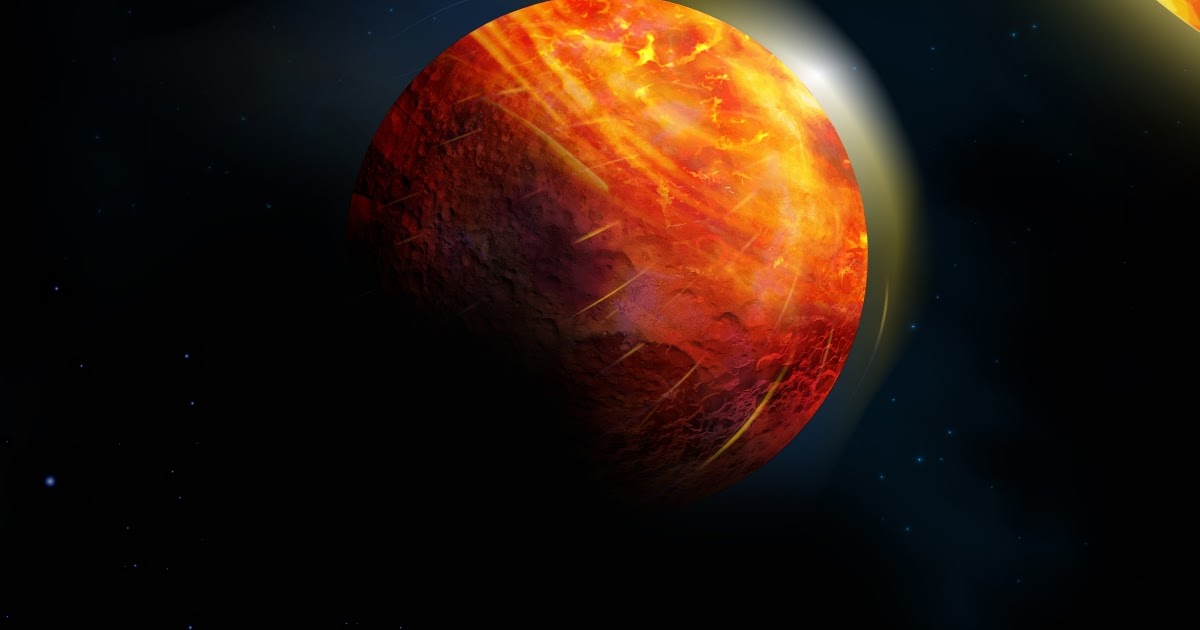
A mannequin of a planetary setting would not spring forth in all of its element. Usually we begin with the only mannequin that captures the important physics, however which additionally leaves out essential particulars. Generally the outline of such a mannequin even suits on the again of an envelope! We then construct within the complexity piece by piece. This can be a course of that PhD pupil Giang has been pursuing over the previous couple of years as his fashions of K2-141b turns into ever extra refined. At every stage, we study one thing new as we proceed from an answer correct to a specific order of magnitude, to a ten% degree resolution to a 1% degree resolution. There may be profit within the complexity – however it’s essential to not outrun the information by an excessive amount of. If we make a prediction or add a minor course of that can’t be verified by way of the information, we run the danger of inventing tales about these worlds which can be mere delusions.
By Giang Nguyen
In my earlier put up, I confirmed what occurred after I introduce UV radiation absorption to K2-141b’s environment. The outcomes from the mannequin went weird because the environment stored heating as much as primarily turn into plasma. Though numerically sound inside our mathematical assemble, this ultra-hot environment merely isn’t reasonable as that may make the environment on the planet even hotter than its star.
As I suspected, there was a problem with how I handled radiative cooling. The unique manner for the environment to chill could be completely by way of infrared emissions. Though many of the vitality does radiate within the infrared wavelengths, the emissivity of silicon monoxide in that spectral vary could be very small in comparison with UV gentle. Due to this fact, there may be some UV emission that’s unaccounted for that may considerably cools the environment.
The answer to this drawback is to individually calculate the blackbody radiation of the environment in each infrared and UV. That is executed by integrating the Planck perform over the specified wavelength vary and multiply it with the corresponding emissivity. Right here’s the factor with blackbody radiation, particularly for warm temperatures of 1000’s of kelvins. Many of the radiance comes from a really small sliver of wavelengths, and it’s just about negligible as compared at each different wavelength. Due to this fact, when you’ve gotten low spectral decision, the estimate of the radiance turns into very inaccurate when you do your integration.
My subsequent step was to do the Planck integration individually solely as a perform of temperature with satisfactory spectral decision after which to suit that integration to a polynomial. As the mixing course of now turns into a single line of calculations as an alternative of a bunch of for loops, we’re again to our outdated speedy mannequin. Nevertheless, we’re on the mercy of our match coefficients and plainly our temperature vary is simply too massive for a polynomial match to be correct; be aware that our temperature can vary from 0 – 3000 Okay.
All hope gave the impression to be misplaced. I used to be going to must run the gradual mannequin which I estimate will take weeks to pump out an answer, which could not even be appropriate resolution. Fortunately, some scientists within the Seventies bumped into the identical drawback and have been in a position to remedy it themselves. While you combine the Planck perform by components, you find yourself with an infinite sum (slightly little bit of math identities is required right here as effectively). Computing this infinite sum is far quicker than the basic manner as this sum converges a lot quicker. Lastly, with the Planck finite integral taken care of, we are able to cope with radiative cooling.
As anticipated, UV emissions capped the temperature of the environment – however it was nonetheless scorching. The temperature hovers round 2900K throughout the dayside virtually uniformly. As a result of UV emission solely turns into important when the environment is scorching, it by no means forces the temperature to drop additional at low temperatures. When UV absorption and emission cancel one another out at a particular temperature, a really secure form of radiative steadiness happens. This seems to be essential because the environment turns into too skinny for IR radiation to take impact.
A heat SiO environment is predicted, however for it to be so horizontally constant and hotter than the floor is a shock. A welcoming shock. For emission spectra, a hotter environment means a brighter sign. Utilizing SiO spectral options, we might in the end see K2-141b’s environment as an alternative of the bottom beneath it. Additionally, the dimensions top is thicker, even close to the terminator (the place on the planet you’d see the star on the horizon). Which means throughout a transit, the planet’s environment is optically thick sufficient to soak up the star’s gentle that travels by way of that environment on the best way to Earth. With supersonic winds, this would possibly induce an observable Doppler shift when measuring K2-141b’s transmission spectra.
In the end, when contemplating UV absorption and emission, the environment on K2-141b is simpler to detect, for both low-resolution and high-resolution spectral devices. This is excellent information as K2-141b is slotted for commentary time with the James Webb Area Telescope (JWST). Together with doable future observations from ground-based telescopes, we might definitively detect and characterize K2-141b’s environment – a primary for terrestrial exoplanets.
This concludes my replace for my present analysis mission. Utilizing a handy numerical technique to judge particular Planck integrals, we solved the issue of coping with K2-141b’s atmospheric radiative cooling. The resultant environment with the total radiative switch is sort of uniformly scorching throughout the planet’s dayside. This means that K2-141b’s environment is quite a bit simpler to detect than anticipated. That is thrilling as K2-141b is a excessive valued goal for commentary, and it may be the primary terrestrial exoplanet the place we now have noticed an environment. Though a small step, it’s nonetheless a step in the direction of discovering liveable worlds and life past the photo voltaic system.




